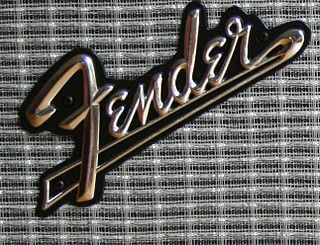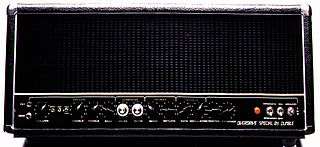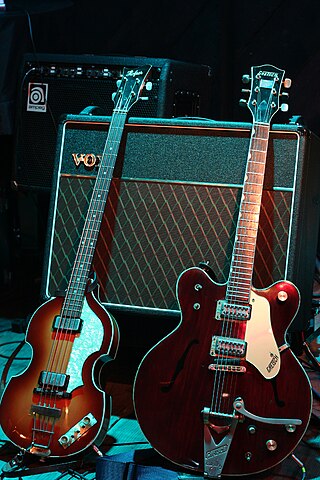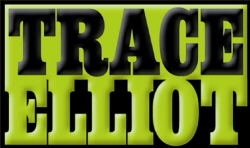1960s
Orange was founded in 1968 by musician and electronics designer Clifford Cooper of London, [3] and opened premises at 3 New Compton Street in London's West End. Initially, Cooper used only the basement as a professional recording studio. The original studio featured an IBC mixing console originally owned by Joe Meek, producer of The Millionaires. Because the studio failed to meet its business costs, on September 2, 1968 the ground floor premises were opened as a music shop. In order to cover wage costs for the business, Cooper sold his own electronic musical equipment. [4]
Difficulties in obtaining stock meant that the new Orange shop at first dealt only in second hand equipment. Many musicians around that time preferred older, used, or beaten-up guitars as they were considered to be of better quality and have more character than the new ones available. The Orange shop was the first to cater for this market. The difficulties faced in stocking the shop led Cooper to design Orange's own amplifiers. In late autumn of 1968, Huddersfield based company Radio Craft, owned by Mat Mathias, was appointed to produce the first Orange-branded amplifiers.
Whilst in London, Orange shop salesman Mick Dines became closely involved with the design of Orange cabinets. Because Dines was a touring musician, he understood how road travel strained equipment and lead to breakdown. Dines ensured that durability was at the forefront of the Orange design, with features such as the basketweave grillecloth. Additionally, wooden skids provided strength and improved the sound dramatically by acoustically coupling the cabinet to the stage or wooden floor.
It is a common misconception that the earliest Orange amplifiers were jointly produced by Orange and Matamp, the brand name that Mathias used on his own design of amplifiers. This was not the case. Radio Craft produced hi-fi guitar amplifiers which, whilst ideal for bass guitar, produced a tone far too clean and flat for electric lead guitars. Early Orange Matamp amplifiers were built by Radio Craft to Cooper's specification to provide a new generation of guitarists with the sustain they demanded. The front end was modified and Cooper changed the chassis from lightweight aluminium to enamelled steel. The Orange logo was designed to be clearly visible on stage. When the design was delivered to Radio Craft, Mathias suggested that a small Matamp logo be added. As a courtesy to Mathias, Cooper agreed to this request, making Matamp a model name.
The first of the Orange Matamp amplifiers were 100 watt valve amps and were produced in very small numbers in the rear of a tobacconist shop owned by Mathias. Demand for Orange amplifiers grew quickly and Radio Craft was unable to keep up with orders. It became apparent that larger premises were required for business growth.
Mathias was unable to finance the move at the time. In 1969, Cooper Mathias Ltd was formed to replace Radio Craft. Cooper's feeling was that a 50/50 partnership would be to the advantage of all parties, rather than to simply finance Radio Craft with the benefit of cheaper overheads in Huddersfield than in London. The central plan behind Cooper Mathias was to increase capacity and productivity to a level at which the service could be offered to other amplifier companies.
1970s
The factory in Cowcliffe near Huddersfield was opened in early 1970. Mathias would drive from Huddersfield with a small number of completed amplifier chassis which would be fitted into sleeves, boxed, and despatched from the Orange Shop in London. At this time business in London was moving very rapidly; however, the situation in Huddersfield was much slower. Whilst visiting the factory for a production meeting, Cooper was struck by the slow pace of production. Large numbers of back orders meant that production at Cowcliffe was failing to keep up with demand and the low number of units being produced caused the operation to be non cost effective and not covering its overheads.
The decision was taken to end Orange's relationship with Matamp. Cooper and Mathias remained on friendly terms despite the split, with Cooper describing Mathias as "a real gentleman for whom I have always had nothing but the greatest admiration." After the decision to cease production in Huddersfield, Cooper located premises in a derelict shop on the corner of Neil's Yard and Short's Gardens in the Covent Garden area of London. This move was to increase productivity and to provide more room for cabinet making, amp testing, and storage, with cabinets being produced on the ground floor and amplifiers in the basement.
In 1971, whilst driving in London, Cooper noticed the new road signs being introduced into the UK used graphic symbols rather than words and asked the design team to come up with a set of custom symbols that would clearly show what the control was for and would make sense to users who may not be familiar with English.
It was in 1972 that John James, Orange's Research and Development Engineer, designed what would become one of the world's most iconic amplifiers, The "Graphic Valve Amplifier," nicknamed simply "Pics Only", which was a reference to the unique front graphic panels. Early models of the Pics Only were known as "Plexis" because they had a plastic reverse printed perspex panel secured on an orange steel backplate fixed to the chassis. With later models the front panel was not plastic but silk screen printed metal plates. The Pics Only was the start of the new sound now associated with Orange and has remained the influence for the design and sound of Orange Amplifiers. With demand for Orange amplifiers still increasing it was necessary once again to seek larger premises and locate a proper factory facility.
In 1973, production was moved to 17 Upland Road, Bexleyheath, in Kent. There a proper production line was possible, and this resulted in a marked increase in the number of amplifiers and cabinets being completed, an average of one amp per worker per day. This more industrial approach meant that amplifiers and cabinets could be lined up, 20–30 units at a time, and completed sequentially. This period saw distribution of Orange products in the US for the first time. It was also in 1973 that the Pics Only was redesigned. As well as some electronic modifications, the front panel was amended resulting in the Graphic 120 "Pics & Text" amplifier which was launched in 1974.
In 1975, Orange launched the Custom Reverb Twin MKII which was introduced to compete directly with the Fender Twin Reverb; similarly priced, this amp featured a Hammond spring reverb, a tremolo, and a master volume. It was initially available only as a 50 Watt but the success of this model as a versatile studio amplifier led to a 100 Watt version being produced. Unusually, this model featured black with silver fleck speaker cloth rather than the iconic Basketweave grille cloth.
The Orange brand was well established as a manufacturer of valve amps by the mid-1970s, but Cooper was keen to diversify the Orange product range and include solid state amplifiers for the first time. OMEC, which stands for Orange Music Electronic Company, was formed. Cooper engaged designer Peter Hamilton with the brief to design a computerised amp. The only way to achieve this was with the use of SSI and MSI (small and medium scale logic chips.)
At the time there was a stark choice, largely due to cost, between TTL (transistor-transistor logic) which consumed a large amount of power but was readily available and well proven or a new technology from RCA called COS-MOS which was low power consumption but prone to static damage. At the time COS-MOS was considered too risky to use. That technology led to today's CMOS microcontrollers with built in static protection, low power consumption, and millions of transistors on a single chip. Hamilton's design was known as the OMEC Digital Programmable Amplifier and was the world's first digitally programmable amplifier. Real DSP was not readily available until the mid-1990s so the OMEC Digital was effectively a digitally controlled analogue amplifier. A drawback to using TTL became apparent quite quickly as the programmable memory took almost an amp at 5 watts, so any settings were lost as soon as the amplifier was turned off. A backup battery was added in the event of a brief power cut but these would only last approximately one hour. Ultimately, the OMEC Digital Amplifier proved to be innovative but ahead of its time and would require a huge amount of investment to make it financially viable.
Whilst the programmable computerised amplifier was perhaps released a decade too soon, Orange continued to produce solid state amplifiers, with the denim clad Jimmy Bean amp being released in 1976. The low cost but high quality integrated circuit chips used in the OMEC allowed for a wealth of innovative signal processing technology to be adapted to other amplifiers and, when coupled with a proven power amp design, led to the launch of a series of solid state amps and matching cabinets throughout 1976 to 1979.
By the late 1970s the music world had moved on significantly from the psychedelic hippie movement of the 1960s and the decision was taken to update the design of the range. The typeface was changed to a more modern font, the sleeve was lowered to give a sleeker look, and the basketweave grille was changed to a black material with a different level of sound transparency. As part of this major makeover in 1978/1978 Orange divided its product range into Orange Sound Reinforcement and Orange Instrument Amplification. Sound reinforcement included PA, mixing desks, and solid state power amps. Examples of models from this period include the Series Two and the Hustler range of guitar and bass amplifiers.
In 1978 the Orange Shop closed when the buildings on New Compton Street were demolished. Production ceased at the Bexleyheath factory in 1979 when two major overseas distributors going into liquidation within a short period of time made the production line no longer viable.


















